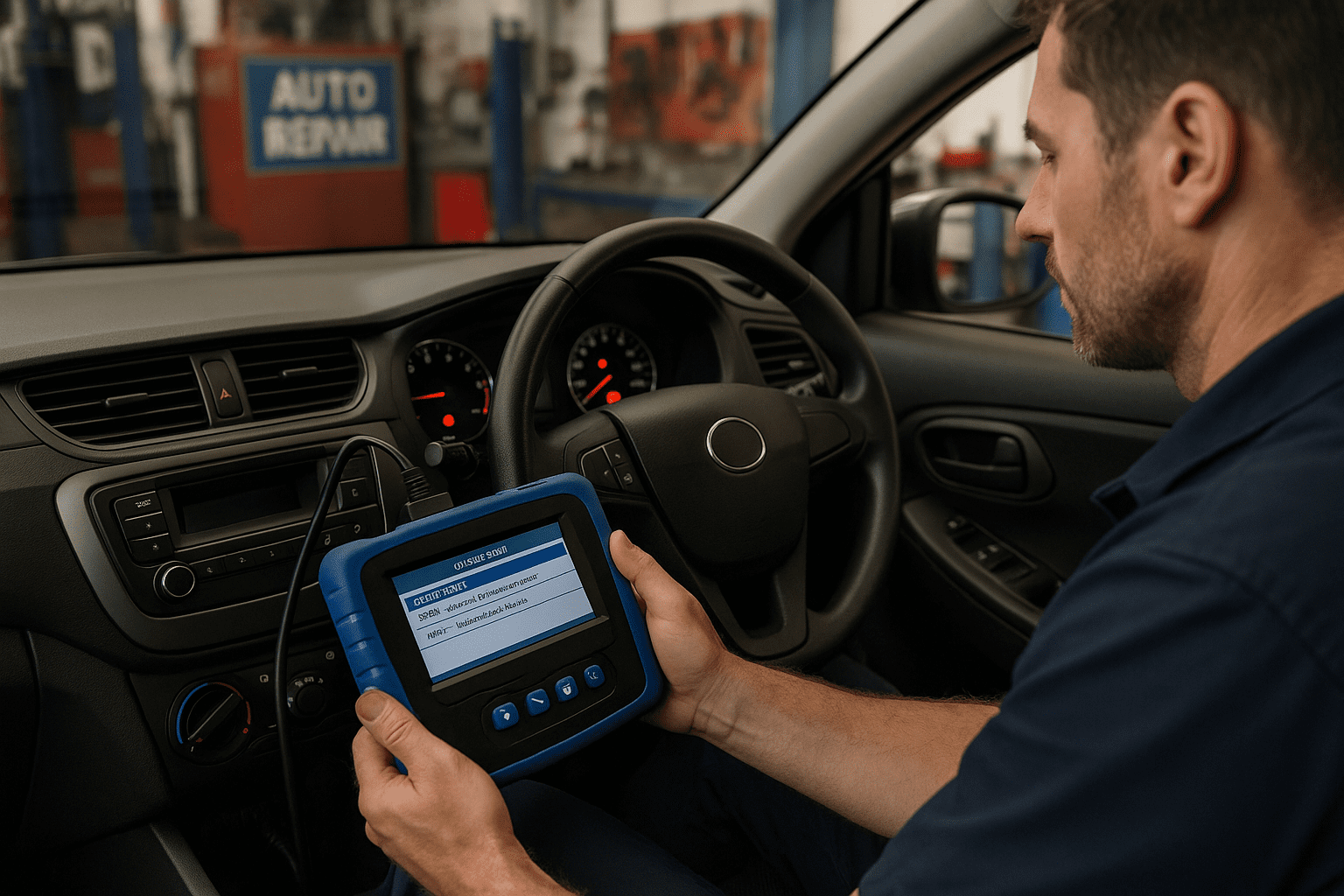Heard the term ‘diagnostic scan’ mentioned when talking about car repairs? It sounds technical, but it’s a really common and useful tool for diagnosing issues with modern vehicles, especially when electrical problems arise. So, what exactly is it, and when might you need one here in Ashburton?
What is a Diagnostic Scan?
Think of your car as having lots of small computers (called control modules or ECUs) managing everything from the engine and transmission to the brakes, airbags, air conditioning, and even the electric windows. These modules constantly monitor sensors throughout the vehicle.
When a module detects a problem, such as a sensor reading being out of range or a component not responding correctly, it stores a ‘fault code’ in its memory. It might also turn on a warning light on your dashboard (like the check engine light, ABS light, or airbag light).
A diagnostic scan involves plugging a specialised computer (a scan tool) into your car’s diagnostic port (usually located under the dashboard). This tool communicates with the car’s control modules and reads out any stored fault codes.
What Do the Codes Mean?
Each fault code is specific and points towards a particular system or component where the issue was detected. For example, a code might indicate a problem with an oxygen sensor, a wheel speed sensor for the ABS, or communication issues between modules.
However, the code itself doesn’t always tell the whole story. It tells us *where* the car detected a problem, but not necessarily *why*. For instance, a code for a sensor might be caused by the sensor itself failing, but it could also be due to faulty wiring to the sensor, or even a problem in the module reading the sensor.
When Do You Need a Scan?
You’d typically need a diagnostic scan in Ashburton if:
* A warning light comes on: This is the most obvious sign. The scan helps identify why the light is illuminated.
* You’re experiencing electrical issues: Things like intermittent starting problems, strange behaviour from lights or accessories, or poor engine performance can often be diagnosed more quickly with a scan.
* Before buying a used car: A pre-purchase inspection should include a scan to check for any hidden historical or current faults.
* After certain repairs: To ensure the fault is cleared and no new issues have arisen.
The Auto Electrician’s Role
Reading the codes is just the first step. An experienced auto electrician, like the team at AutoSparks, uses the fault codes as a starting point for further investigation. We combine the code information with our knowledge of vehicle systems and perform additional tests (like checking wiring, testing components, or looking at live sensor data on the scan tool) to accurately pinpoint the root cause of the problem.
A diagnostic scan is a powerful tool that helps us efficiently locate electrical faults, saving time and eliminating guesswork. If you’ve got warning lights on or suspect an electrical issue with your vehicle in Ashburton, a scan is often the best place to start.

